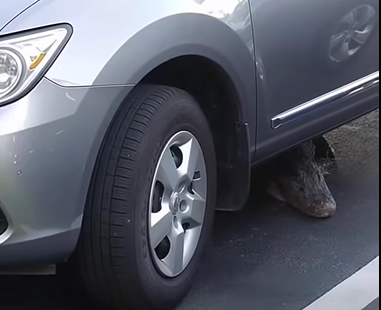It began as a perfectly ordinary morning. Coffee in hand, I headed toward my car, ready to start the day.
But something unusual caught my eye beneath the vehicle — a shadow that moved when the breeze didn’t.
My curiosity turned to concern as I crouched down, expecting to find a stray cat or maybe a bundle of leaves. Instead, two dark eyes blinked back at me, and I realized this was something alive — and much larger than I expected.
At first glance, it looked like a lizard, but as it shifted, my breath caught. Beneath my car was a small alligator, scales glistening in the early sunlight. I froze, torn between fear and fascination. Children were nearby waiting for the school bus, and neighbors walked their dogs just a few steps away. Quickly, I called animal control and kept everyone back. When the creature began to move, I noticed something heartbreaking — it was limping, clearly injured, and trying to hide rather than harm.
When the officers arrived, they worked carefully to calm and rescue the animal. It took nearly an hour, but eventually, the alligator was safely sedated and transported to a wildlife center for treatment. Later that evening, I learned it hadn’t come from the wild at all. It had escaped from a private facility just a few miles away — a place that kept exotic animals without proper care or registration.
That discovery stayed with me. I had never thought much about how wild creatures end up in neighborhoods like mine. Seeing that wounded alligator reminded me how fragile the balance between humans and nature can be — and how easily our actions can disturb it. What began as a frightening morning ended with a powerful lesson: compassion isn’t just for people; it’s also for the world we share with every living being.
